The Queens residence, the royal house in the Tower. And the last original Tudor house in London
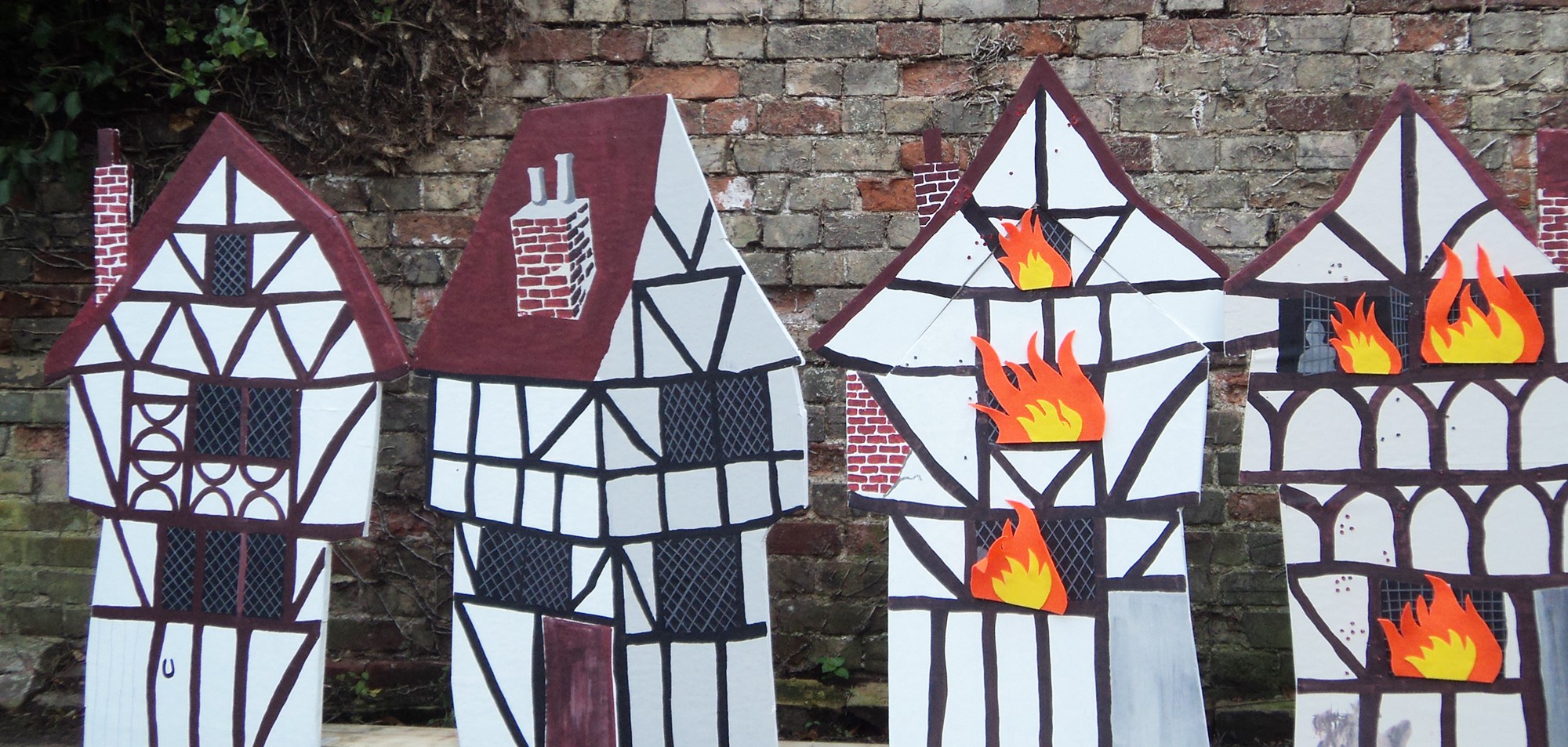
History for schools following the Great Fire of London 1666 KS2 MTCD
The Great Fire of London was a major conflagration that swept through central London from Sunday 2 September to Thursday 6 September 1666, [1] gutting the medieval City of London inside the old Roman city wall, while also extending past the wall to the west.

Fly Through 17th Century London. The model focuses on the area around Pudding Lane and the
Six students from De Montfort University have created a stellar 3D representation of 17th century London, as it existed before The Great Fire of 1666. The three-minute video provides a realistic animation of Tudor London, and particularly a section called Pudding Lane where the fire started.

The great survivors Where to find Tudor buildings which survived the great fire of London of
Tudor (1485-1603) In Tudor times the hovel grew up. An original (ish) Tudor building is Staples Inn, High Holborn. Its structure of white panels made from 'wattle' (sticks) and 'daub' (mud.
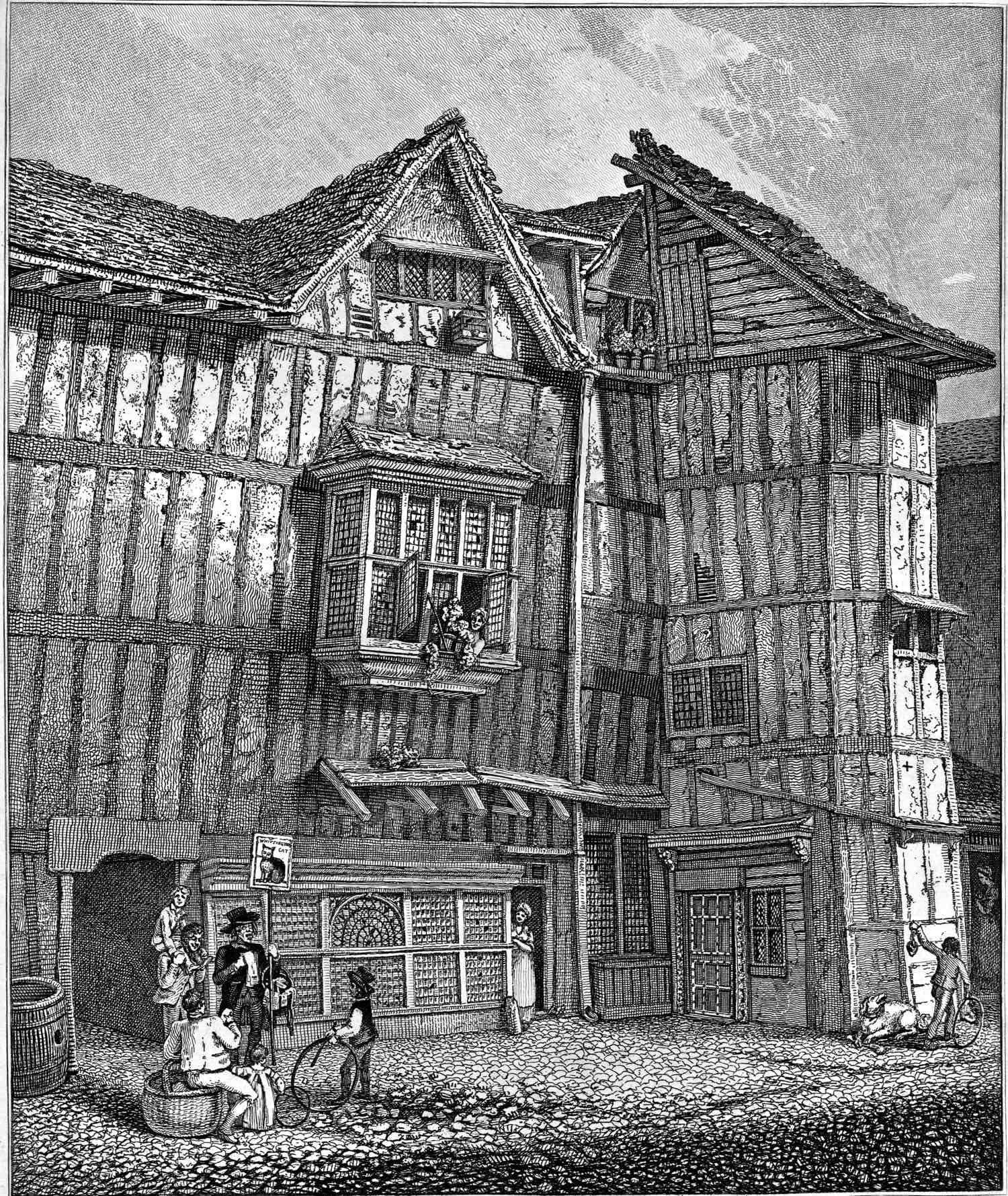
21 House In 1666 Pictures From The Best Collection JHMRad
The medieval nobility : studies on the ruling classes of France and Germany from the sixth to the twelfth century

Tudor building on Henley Street, StratforduponAvon, Warwickshire, England Architecture
Although the Great Fire of London destroyed over 13,000 houses, almost 90 churches and even the mighty St Paul's Cathedral, a handful of survivors managed to escape the flames and can still be seen to this day. Before we look at where these resilient old buildings are located, it's useful to see how much of London the Great Fire actually destroyed.
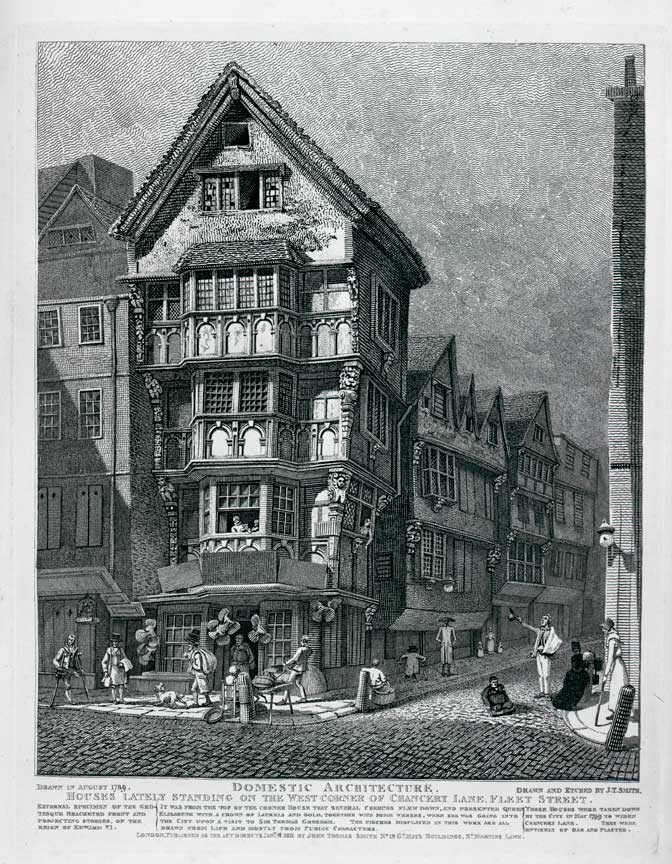
Browse artefacts The Great Fire of London
Buildings of 1666 - NEW LOOK Consider the design of buildings, the properties of building materials and the contrast between the materials used in modern buildings and around the time of the Great Fire of London. Make 3-D models and 2-D collages of Tudor homes, and re-enact the Great Fire of London with tissue paper 'flames'!

The Tudor Buildings of London 1666 Peregrines Class Blog
And that disaster occurred in 1666 when the Great Fire of London tore rapidly through the city, leaving a devastating trail in its wake. Still, despite much of the city burning down, some Tudor architecture can be seen across the city today. So, strap up your walking boots and get ready to take a tour of the streets of London. The Tower of London

Lost in the Great Fire which London buildings disappeared in the 1666 blaze? The great fire
A Tudor house is a style of architecture that emerged during the Tudor period in England, which spanned from the late 15th century to the early 17th century. Tudor houses are characterized by their distinctive timber framing, steeply pitched roofs, tall chimneys, and decorative half-timbering on the exterior walls.
xoxo, xenophile London Day Five
Tudor house architecture: How England's great homes evolved in the 16th century John Goodall March 27, 2022 Fig 1: The panelled parlour of Alston Court, Suffolk, dated to about 1520. Credit: Country Life Picture Library Country Life's architecture editor John Goodall looks at the architecture of the Tudor home.
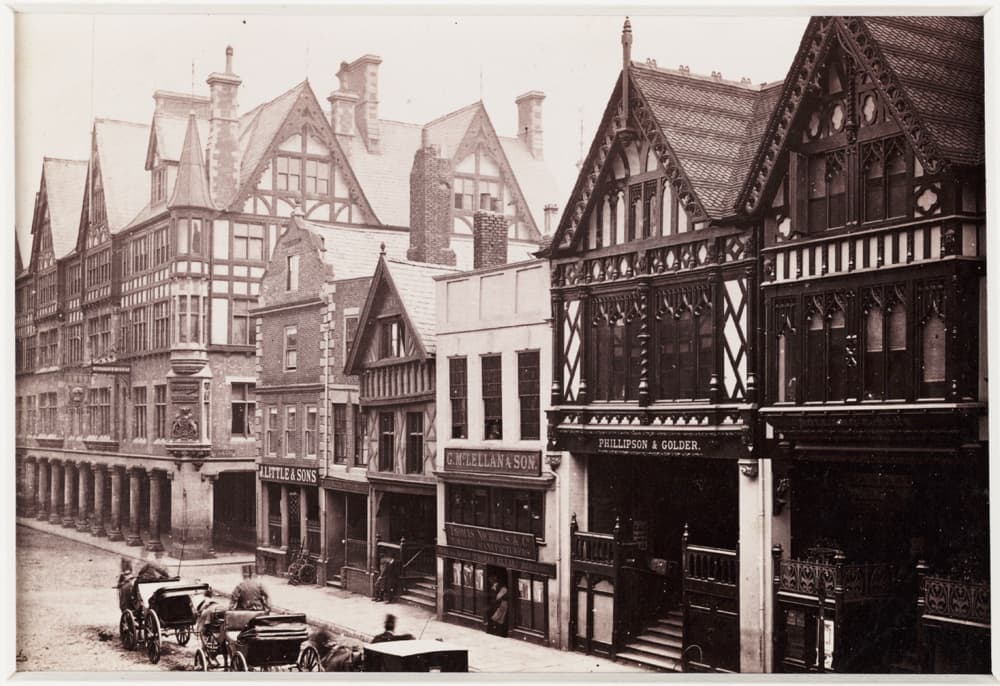
Tudor Houses Facts, Worksheets & Information for Kids
00:20. Amazing 3D animation of historic London. Check out this award-winning animation that whizzes you through the streets of Tudor London, hundreds of years ago. The 3D fly-through around.

Surveying Property Tudor Houses Timber Frame Construction
James The Tudors Here are some facts about Tudor houses. One of the most distinctive things about a Tudor house was the black and white effect (see image below), because of their exposed wooden frames. There are many Tudor houses in England, some of which are still being lived in today.
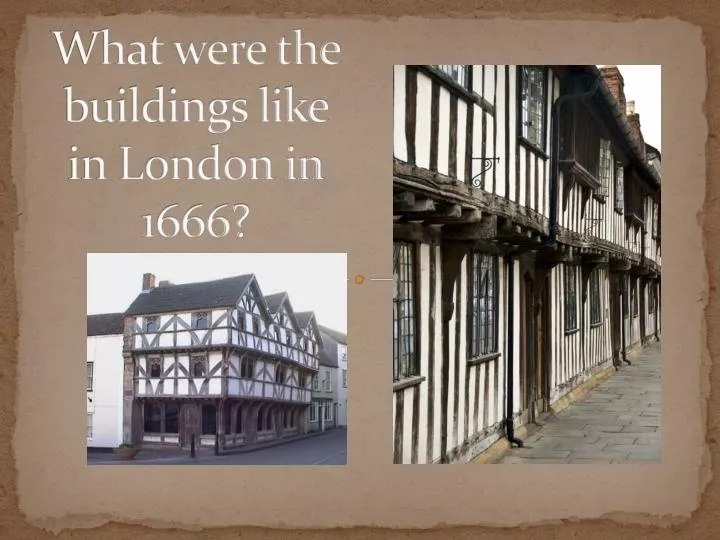
PPT What were the buildings like in London in 1666? PowerPoint Presentation ID2714557
Collecting the dead for burial during the Great Plague. The Great Plague of London, lasting from 1665 to 1666, was the last major epidemic of the bubonic plague to occur in England.It happened within the centuries-long Second Pandemic, a period of intermittent bubonic plague epidemics that originated in Central Asia in 1331 (the first year of the Black Death), and included related diseases.
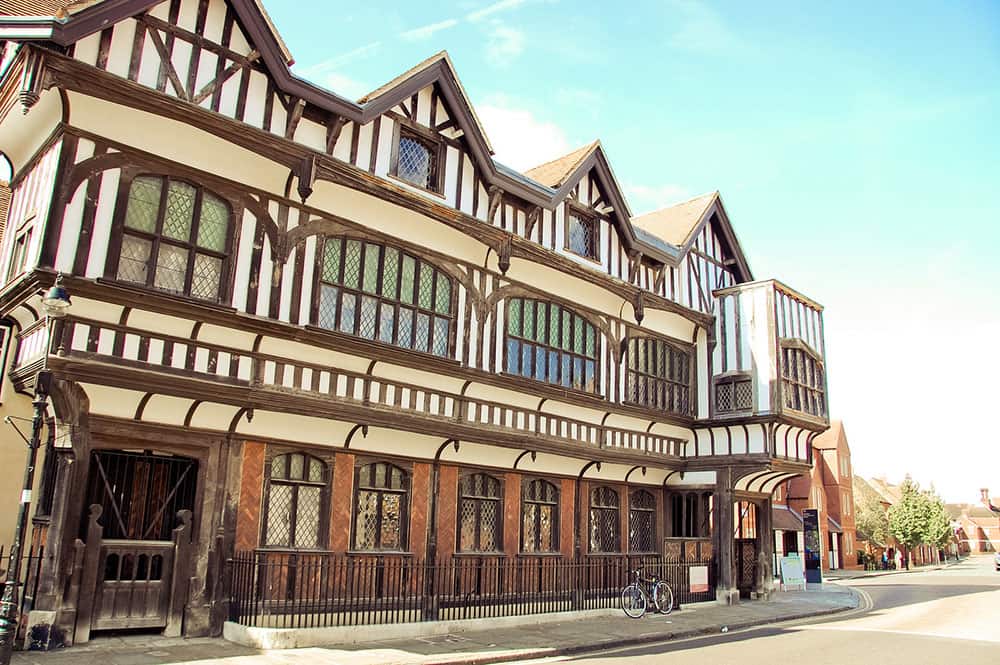
Tudor Houses Facts, Worksheets & Information for Kids
We are six students from De Montfort University taking part in the Crytek Off the Map project, building a 3D representation of 17th century London before The.
London in 1666 Content ClassConnect
This online resource aims to help children explore this event through the eyes of four people who saw it. It can help children to develop an awareness of what the term "eyewitness" means and why eyewitness accounts may differ. T. Tes for Teachers | Teaching Resources. Year 2 - Tudor House - Great Fire of London - 1666. Uk History. London.
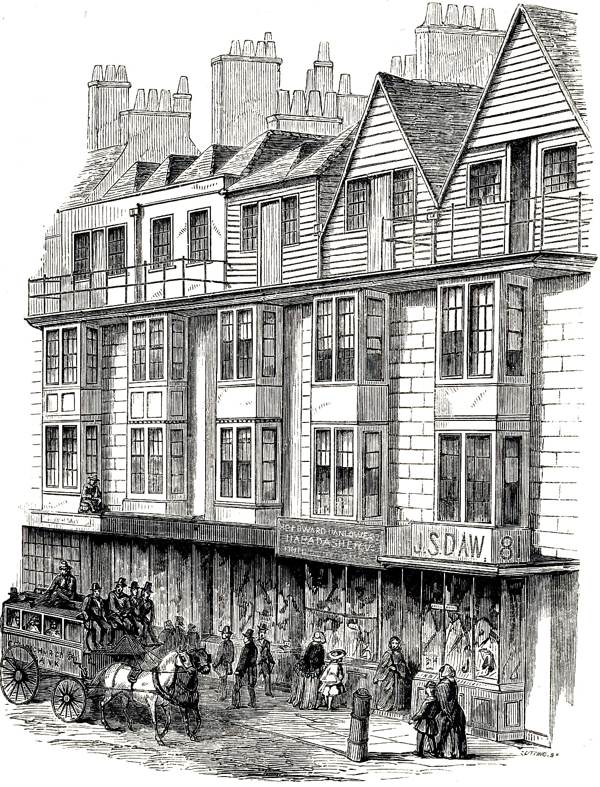
21 House In 1666 Pictures From The Best Collection JHMRad
Houses were usually made of timber (wood) and wattle and daub. Timber coated with tar. (The Victorians coated the beams with tar. The Tudors left the wood bare) Wattle is the intertwined sticks that are placed in a wall between posts. You can see the woven sticks in the photographs below. Daub is a mixture of clay, sand and dung that is smeared.
Dolls' Houses and Miniatures Period Style Tudor and Elizabethen Architecture Part 2
Hardwick Hall, Elizabethan prodigy house The Tudor architectural style is the final development of medieval architecture in England and Wales, during the Tudor period (1485-1603) and even beyond, and also the tentative introduction of Renaissance architecture to Britain.